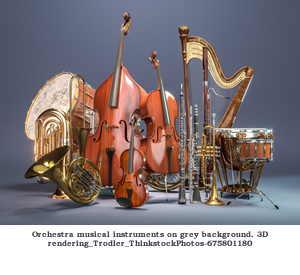Classical Era: Musical Styles

While the music of the Classical Era was not necessarily “unemotional,” Composers did tend to stay closely to established rules concerning form, style, and performance conventions. Elegance and order were two hallmarks of the music of the Classical era. Composers such as Mozart created memorable symphonies and both serious and comic operas that found an audience across both the wealthy and the working-class. Mozart, Haydn, and Beethoven built upon the foundation created during the Baroque era by Bach and Handel. It was not until later in the era when Beethoven started to expand upon the standards created during the Classical Era. As composers began to work outside the restrictions set upon them by the patronage system, they also began to “bend” the rules of what was expected, or what could be done, in Classical music. Many of the compositions of this era had non-descript titles, such as "Symphony No. 7," and were often performed in formal concert or recital halls.
When discussing Classical music, it is important to know about musical form. Musical form is the overall structure of a piece of music. For example, the three most popular forms of music in the Classical era were the sonata, the symphony, and the string quartet.
The symphony is a piece of music composed for a large group of instruments. Symphonies usually contain four different movements, or sections. The movements can usually stand alone, but are performed in succession with a pause following each movement. In most cases the first movement is brisk and lively; the second is slower and more lyrical; the third is energetic; and the fourth is the finale.
A sonata is like a symphony but is composed for only one or two instruments. There have been hundreds of sonatas written for piano alone, and many more written for piano and one other instrument.
A string quartet consists of two violins, a viola, and a cello. The structure of a string quartet piece is very similar to that of a symphony; usually four movements arranged in the same order.